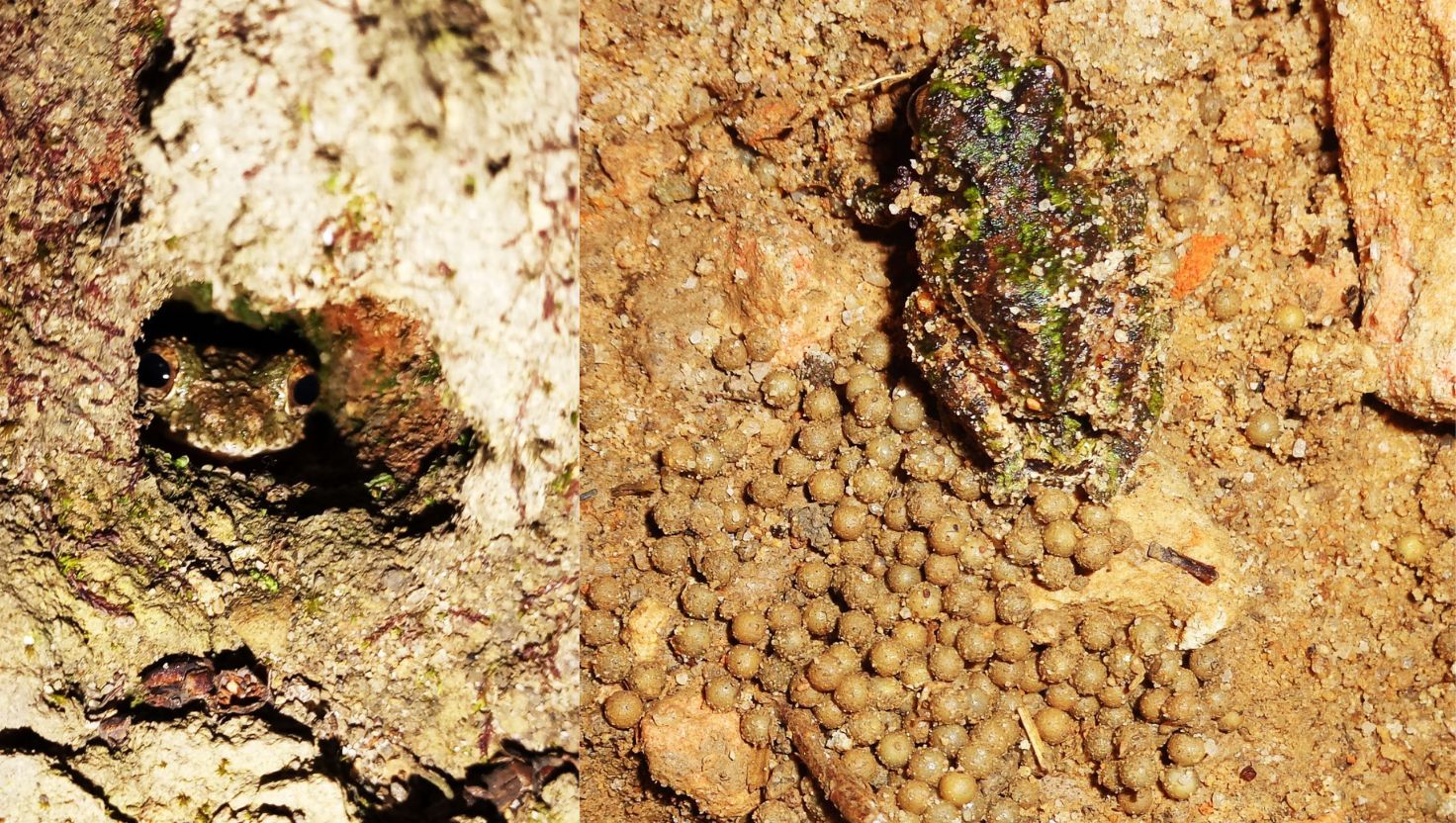Here’s How This Frog Species ‘Kurixalus naso’ Uses the Monsoon of Meghalaya For Survival
First Published: 20th March, 2025 15:58 IST
Monsoon For Survival of Frog Species: Unlike typical frog eggs that hatch quickly, these eggs remain dormant for up to 15 days.
Deep within Meghalaya’s rain-soaked hills, a remarkable amphibian species, Kurixalus naso, has unveiled a survival strategy unlike any other. Found in the high-altitude region of Mawsynram, this frog’s unique reproductive behaviour defies traditional norms.
A recent study published in Current Science highlights this extraordinary adaptation, revealing how K. naso times its breeding with Meghalaya’s unpredictable monsoon cycle. Conducted by researchers from St. Edmund’s College, Shillong, NEHU, and Utkal University, the study uncovers the frog’s intricate survival method.
As pre-monsoon showers arrive in February, male frogs emerge from rock crevices to dig small burrows in the moist forest soil. They then call for mates from within these shelters. After mating, female frogs lay eggs deep inside the burrows before departing, leaving the males to guard the clutch.
What sets K. naso apart is its delayed hatching mechanism. Unlike typical frog eggs that hatch quickly, these eggs remain dormant for up to 15 days, concealed within the soil. Only when heavy monsoon rains flood the burrows do the tadpoles emerge—already at an advanced developmental stage with gills absorbed. This strategy ensures their survival in Meghalaya’s unpredictable climate.
However, this delicate cycle leaves the species vulnerable to climate change. Erratic monsoon patterns could cause premature hatching or leave eggs dry before rainfall arrives. As a result, K. naso is seen as a potential indicator species for shifting weather patterns in the region.
Conserving its habitat, particularly the damp forest floor is crucial to protecting this fascinating frog. Its unique adaptation underscores the delicate balance of Meghalaya’s rich biodiversity in the face of changing climate conditions.
“The way these frogs hide their eggs is incredibly unique. By blending them with the soil, they may be mimicking seeds, making them harder for predators to detect,” explains P.W. Shangpliang lead researcher from St Edmund’s College Shillong.
Also Read: Meghalaya BJP Shake-Up on the Cards? Sanbor Shullai Likely to Replace AL Hek in Meghalaya Cabinet?
COMMENTS

TOPMOST STORY NOW

Live Meghalaya: NEHU to Form Inquiry Committee to Probe Brutal Assault on Assistant Professor Dr. Alok Kumar Singh
25th April 2025
Live Amit Shah asks all CMs to identify Pakistani nationals in their states, ensure their return
25th April 2025
Live Girls Top All Streams as Manipur Class 12 Exam 2025 Records 94% Pass Percentage
25th April 2025
Live Rahul Gandhi meets JK CM, Pahalgam attack survivor; says idea of attack was to divide society
25th April 2025WE RECOMMEND

Meghalaya: NEHU to Form Inquiry Committee to Probe Brutal Assault on Assistant Professor Dr. Alok Kumar Singh
NEHU Public Relations Officer Dr. Davidson Pyngrope said, ' We condemn such kind of violence inside the university campus."
25th April 2025
NEHU Professor Attacked Inside Campus; Dr Alok Kumar Singh Shows Visible Injury Marks
Speaking to Northeast Live, Dr Alok Kumar Singh said the incident occurred around 4:45 pm when six youths entered his room.
25th April 2025
Meghalaya Govt to Replace Rusted Electric Poles and Outsated Conductors Statewide to Boost Public Safety
The move comes as part of a broader departmental initiative, Power Minister A.T. Mondal said.
23rd April 2025
Phoebe Dale Nongrum, First Woman Formula 4 Racer from Northeast Eyes to Win Indian National Rally Championship 2025
Hailing from Shillong, Phoebe Dale Nongrum secretly learnt driving under the pretext of playing basketball at the age of 12.
20th April 2025
Meghalaya Woman Brutally Assaulted in Nagpur
Officials have also assured that they will assist her in returning to Meghalaya if she chooses, or help her reach her husband in Tamil Nadu.
19th April 2025

